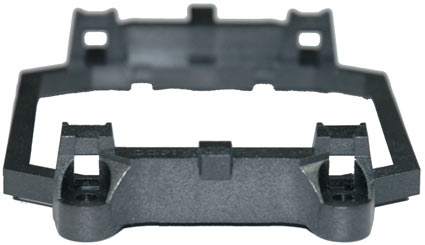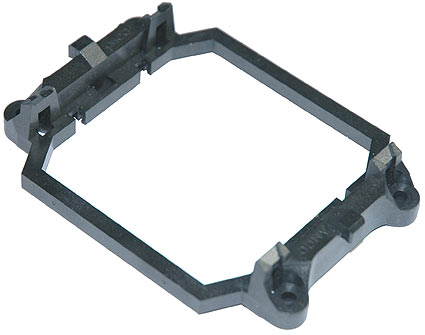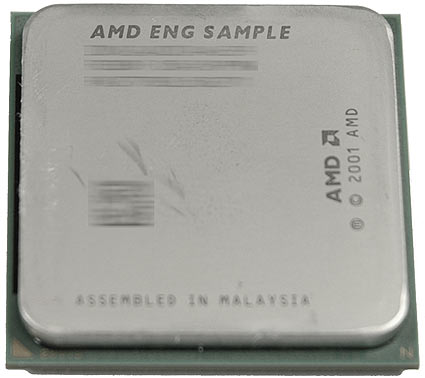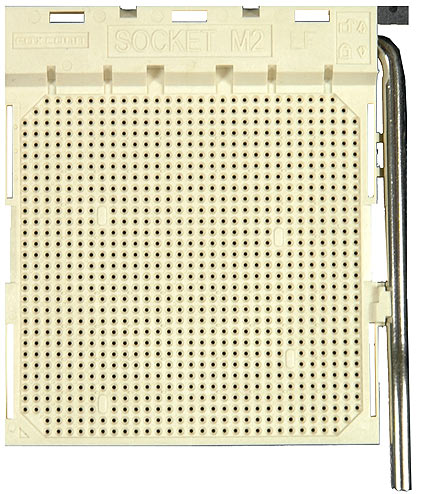AMD AM2 PERFORMANCE REVIEW - AMD M2 REVIEW -AMD M2 BENCHMARK -AMD AM2 BENCHMARK
![]()
|
|
 |
||||||||||||||||||||||||||||||||||||||||||||||||||||||||||||||||||||||||||||||||||||||||||||||||||||||||||||||||||||||||||||||||||||||||||||||||||||||||||||||||||||||||||||||||||||
| Posted:2006-04-10 By hardware review Number of View:20053 |
|||||||||||||||||||||||||||||||||||||||||||||||||||||||||||||||||||||||||||||||||||||||||||||||||||||||||||||||||||||||||||||||||||||||||||||||||||||||||||||||||||||||||||||||||||||
By :hardware review Posted:2006-04-10
AMD AM2 Performance review - amd m2
To say that AMD has been uncharacteristically quiet lately would be an understatement of epic proportions. The company that had been so vocal about their K8 architecture in the past will hardly say anything at all about future products, extending even to its forthcoming AM2 platform. In just two months AMD is scheduled to officially unveil its first DDR2 platform (Socket-AM2), but we\'ve heard virtually nothing about performance expectations. Given that AMD was supposed to launch in June at Computex, the fact that AM2 was performing so poorly just five months before launch was cause for worry. Despite our worries, we elected not to publish benchmark results and to give AMD more time to fix the problems. We\'re not interested in creating mass panic by testing a product that\'s clearly premature. In February we tried once more, this time with a new spin of the AM2 silicon, but performance continued to be lower than Socket-939. Luckily for AMD, the performance had improved significantly, so it was slower than Socket-939 but not as much as before. The next revision of the AM2 silicon- AMD AM2 Performance review
we received sometime in March, and this one finally added support for DDR2-800, which is what AM2 will launch with supposedly at Computex. With the launch only three months out, we expected performance to be at final shipping levels, and we were left disappointed once more. Even with DDR2-800 at the best timings we could manage back then, Socket-AM2 was unable to outperform Socket-939 at DDR-400. That brings us to today; we\'re now in the month of April, with less than two months before AMD\'s official unveiling of its Socket-AM2 platform at Computex in June, and yes we have a brand new spin of AM2 silicon here to test. We should note that it\'s not all AMD that\'s been holding AM2 performance behind. The motherboard makers have of course gone through their fair share of board revisions, not to mention the various chipset revisions that have changed performance as well. Regardless, according to internal AMD documents, AM2 CPUs are going to start being sold to distributors starting next month, leaving very little time for significant changes to the CPU to impact performance. We feel that now is as good of a time to preview AM2 performance and put things into perspective as we\'re likely to get before the official launch.Back in January we sought to discover for ourselves what AMD\'s Socket-AM2 platform would have in store for end users. You\'ll remember that when Intel made the shift to DDR2 it basically yielded no tangible performance improvement, and we were all quite afraid that the same would be true of AM2. When we finally tested the AM2 samples that were available at the time, performance was absolutely dismal. Not only could AMD\'s AM2 not outperform currently shipping Socket-939 platforms, but due to serious issues with the chip\'s memory controller performance was significantly lower. What\'s Amd AM2?AMD AM2 Performance review
What this means is that if you\'re planning to build a new system later this year - whether it is AMD or Intel based - then you\'ll be in the market for DDR2 memory. AMD has effectively kept regular DDR-400 quite alive and actually created a market for even faster DDR1 memories with their Athlon 64, but after June that\'s all going to change. With a single memory standard to support both players in the desktop market, things are going to get a lot simpler. It will also mean that we\'ll start to see more focus from memory vendors on DDR2, including cheaper variants as well as even lower latency offerings. We\'ll address whether nor not DDR2-800 is actually needed shortly, but like it or not, if you want a solid upgrade path for the future you\'ll be looking at investing in some DDR2 memory regardless of whether you choose AMD or Intel. Alongside DDR2 support, the new Socket-AM2 CPUs add support for AMD\'s Pacifica Virtualization technology - AMD\'s answer to Intel\'s VT. While the two technologies aren\'t directly compatible, given the respect that AMD has gained over the past few years you can expect software developers to support it. Virtualization will become increasingly more important as time goes on, as we have already seen in recent announcements of Intel VT support on Apple platforms. The third thing that AM2 brings us is what AMD is calling their Energy Efficient microprocessors. Certain SKUs of AM2 processors will be binned according to their power consumption and grouped into two categories: 65W and 35W. Both TDPs, interestingly enough, are competitive with what Intel is targeting for their 65nm Conroe processors. What\'s even more impressive is that there will be an Athlon 64 X2 3800+ that\'s available at both 65W and 35W TDPs, compared to the standard 89W TDP. The chart below will give you an idea of what the new dual core AM2 CPUs are:
In the future you can also expect an FX-64 along with 5200+ and 5400+, but the chart above is what will be launching in the near future (the exception being that the 65W 4800+ that will launch in Q3). There will also be single core Athlon 64 and Sempron AM2 processors, but we\'re still waiting for their confirmed specs. Given the specs of the Athlon 64 X2s, you can expect the AM2 Athlon 64s and Semprons to be identical to their Socket-939 counterparts. We\'ll also finally get retail availability of faster Sempron parts - current socket-939 Semprons are only available with OEM systems. AMD has already indicated that it will not brand the 65W and 35W parts any differently than the normal 89W Athlon 64 X2s; they will simply have a different part number and carry some sort of lower TDP designation on their box. Of course, they will almost certainly carry a price premium, so that at least should help to differentiate the models somewhat. As far as major architectural changes go, we haven\'t been able to find any surprises in any of our AM2 samples. L1 and L2 cache latencies remain unchanged from their Socket-939 counterparts. You will also notice that AM2 and Socket-939 CPUs appear to carry the same model numbers, meaning that an AM2 X2 4800+ runs at the same speed and has the same cache size as a Socket-939 X2 4800+. Either AMD is being very conservative with its model numbers or we shouldn\'t expect to see any major clock-for-clock increase in performance with AM2 processors. As we\'ve mentioned before, AMD\'s Socket-AM2 is a brand new 940-pin socket that will add DDR2 support for all desktop AMD processors. There will be AM2 versions of Athlon 64, Athlon 64 X2 and Sempron CPUs. All of these are internally known as the Rev F core. When AM2 launches in June, AMD will offer official support for DDR2-533, 667 and 800. As of today, the fastest DDR2 that Intel officially supports is DDR2-667; however, by the time Conroe launches in Q3, Intel will also add DDR2-800 to the list. Review Performance of AMD AM2AMD AM2 Performance reviewUnfortunately the platform that we were testing on would only allow us to run our DDR2-800 at 4-5-4 timings, instead of the 3-3-3 that\'s possible with this memory on socket 775. That hurts performance a bit, but the real world difference between 4-5-4 and 3-3-3 isn\'t going to be more than a few percentage points. The only DDR2-800 we had on hand was in the form of 1GB modules, so we had to use a pair of 1GB DDR-400 which ran at 2-3-2, instead of the 2-2-2 we normally run with our smaller 512MB modules. Once again, the difference in performance isn\'t tremendous, but we wanted to explain why the timings were different than what we\'ve used in the past. Both our Socket-AM2 and Socket-939 Athlon 64 X2 processors ran at the same clock speed with the same cache sizes, so the results should give us a clear indication of whether or not AM2 is faster than equivalent 939 configuration.
Amd Am2 benchmarkAMD AM2 Performance review
We\'ll start at the bottom of the table and go up from there. Rev F processors feature a 128-bit DDR2-800 memory controller, which works out to offer a peak theoretical bandwidth to/from memory of 12.8GB/s. As you can expect, that\'s twice the bandwidth of Rev E CPUs\' 128-bit DDR-400 controller at 6.4GB/s. Thus to see a 36% increase in memory bandwidth according to ScienceMark is to be expected, albeit a bit on the low side. The old DDR-400 memory controller is able to deliver 5GB/s out of a maximum of 6.4GB/s, but now we\'re only seeing 6.8GB/s out of a maximum of 12.8GB/s with AM2. This however is a huge step for AMD, as it is the first spin of the Rev F silicon that we\'ve been able to see such a significant advantage in theoretical memory bandwidth over previous DDR-400 cores. What\'s even more important than the increase in memory bandwidth is that access latency has been reduced by 7.5% over the DDR-400 memory controller in the Rev E cores. Lower latency and more bandwidth means that, at bare minimum, performance won\'t go down. At least, not perceptibly: .4% slower in one test that has a 1-2% variability is nothing to worry about. It also doesn\'t guaranee that performance will go up, as you can see from the results above. If we only count the overall SYSMark score and leave out the synthetic tests, the real world performance advantage averages out to a little under 1.3%. There are some special cases such as Quake 4 and DivX were performance goes up fairly reasonably, which can be expected since both of those tasks are fairly bandwidth intensive and make good use of both cores. However similar benchmarks, such as F.E.A.R. and Windows Media Encoder 9 show lower improvements, so it is very dependent on the specific application and workload. It\'s important to note that until recently, AM2 samples were not able to produce scores even on par with Socket-939, so the fact that we\'re seeing a performance increase at all is a major step from where we were just a couple of months ago. The real question is, is this all we get? Without major architectural changes to the new AM2 CPUs, we wanted a quick and easy way to showcase the performance differences between AM2 and Socket-939. What we\'ve got is a massive table below with all of our usual CPU benchmarks and their results for the same CPU in both Socket-939 and AM2 varieties, and the performance benefit offered by AM2: Does AM2\'s Performance Make Sense?AMD AM2 Performance reviewIf you\'ll remember back to the introduction of AMD\'s Revision E core, we did an article about how the new core brought support four new memory dividers allowing you to run at speeds up to DDR500 without overclocking your CPU or the rest of your system. In that article we looked at the overall performance benefit of DDR-500 over DDR-400 on a Socket-939 platform in a variety of situations. A recap of our performance results is below:
Note that ScienceMark bandwidth is slightly higher than on the previous page because we used a faster CPU; ScienceMark does vary a bit with CPU speed.
As you can see, given almost a 9% increase in memory bandwidth, we saw similarly small increases in overall performance. It would seem that the Athlon 64, at its current clock speeds, just simply isn\'t starved enough for memory bandwidth to benefit from an increase in bandwidth. You\'ll also see that the areas where faster DDR memory helped back then are pretty much the areas where DDR2-800 is showing gains today. Based on our results from back then, if a 9% increase in memory bandwidth doesn\'t increase performance tremendously, then the 35% increase in bandwidth we see with DDR2-800 on AM2 shouldn\'t yield any more of a performance increase. Or simply put, yes, our AM2 performance numbers make sense. Assuming for a moment that the performance we\'re seeing here today is representative of what AMD will show off in 2 months, does it make sense? AMD has effectively doubled their memory bandwidth but they\'ve seen virtually no increase in performance, other than in some very isolated situations. Final Words AMD M2AMD AM2 Performance reviewAMD has done a tremendous job of making DDR-400 last with their architecture. When Intel first talked about moving to DDR2 there was concern that AMD\'s delayed move to the new memory technology would result in it being behind the curve, but the absolute opposite held true; Intel showed no benefit from DDR2 initially and AMD did just fine with only DDR-400. However times are changing, and after a very long hiatus Intel will soon resume increases in FSB frequency, not to mention that their new Core architecture is considerably more data hungry than anything we\'ve seen to date. So on the Intel side of the fence, the greater bandwidth offered by DDR2 will finally have a real use. With Intel DDR2 demand increasing and more manufacturing shifting away from DDR, it now makes sense for AMD to jump on the DDR2 bandwagon as well. If AMD does it early enough, the transition to DDR2 will be complete before any of its products desperately need it, which is always a better route. It\'s not the most convincing reason to switch to DDR2 today, but AMD has stayed on DDR1 far longer than anyone expected and it\'s better to be early than never. The fact of the matter is that CPUs will get more cores, reach higher clock speeds and feature more data-hungry architectural changes, all of which require more memory bandwidth. AMD\'s options are to either add more memory bus pins to the already staggering 939-pin package, or to embrace a higher bandwidth (and lower voltage) memory standard; the option it chose makes a lot of sense. There\'s also this issue of efficiency; based on our ScienceMark results, AMD was able to build an extremely efficient DDR-400 memory controller into their processors. The Rev E processors are able to deliver over 5GB/s of memory bandwidth, which is extremely close to the 6.4GB/s theoretical maximum offered by a 128-bit DDR-400 memory interface. The Rev F AM2 processors we\'ve tested aren\'t able to break 7GB/s yet, which albeit an increase of 35% over the best Socket-939 numbers we\'ve seen, still ends up being only 53% of the peak bandwidth offered by a 128-bit DDR2-800 memory controller compared to the almost 80% we saw on the Rev E. If we use history as our predictor of the future, it may take a few more revisions of AM2 before we see that sort of efficiency, if we ever do. AMD has come a very long way since the performance we saw back in January, and if that\'s any indication we may just end up seeing better performance out of Rev G and H processors in the future. The verdict is also not out on Rev F; although the launch is only two months away, we keep on hearing that availability won\'t be until July. While that\'s not enough time for AMD to be making major changes to the silicon, it is quite possible that the changes have already been made and they\'re just waiting to get new chips back from the fab. Based on what we saw with the Rev E cores and DDR-500, coupled with our results here with DDR2-800, it looks like Socket-AM2 will offer minor performance gains across the board if paired with very low latency DDR2-800, but otherwise it looks like it\'ll offer performance as good as Socket-939. If you\'re looking for numbers, with DDR2-800 at 3-3-3 we\'d expect to see 2 - 7% gains across the board, with the 7% figure being reserved for applications like Quake 4 or DivX and the 2% figure being far more common. Why would you move to Socket-AM2? If you\'re well invested in an up-to-date Socket-939 system, and if these numbers we\'ve seen here today hold true for shipping AM2 platforms, then there\'s no reason to upgrade immediately. However, if you\'re buying or building a brand new system, then by all means AM2 makes a lot more sense than Socket-939. Like it or not, DDR2 is the future, and AM2 will be the new socket for AMD\'s future 65nm parts as well. DDR2 is also competitively priced with DDR memory while generally offering higher bandwidths, and with most manufacturers transitioning to DDR2 now we expect to see further DDR2 price cuts. With AM2 you are investing in memory that will have a longer lifespan and a motherboard that will have a better upgrade path than Socket-939 today. The only other advantage other than a more secure upgrade path that AM2 offers is AMD\'s upcoming Energy Efficient desktop CPUs. We\'re particularly intrigued by the 35W Athlon 64 X2 3800+; if you thought AMD\'s processors were cool and quiet, a 35W X2 should blow you away. (It might overclock really nicely as well!) The disheartening news for AMD and its fans alike is that if AM2 can\'t offer significant performance increases over what we have now, then all Intel has to do is execute Conroe on schedule, delivering the performance we\'ve been promised and 2006 will be painted blue. AMD has been telling us that 2007 is the year we\'ll see major architectural changes to their processors, so AM2 may very well be as good as it gets for now. That\'s still very good, of course - the fastest X2 chips still outperform the fastest Pentium D chips - but it looks like after three years K8 may finally get some competition for the performance crown.If AMD\'s Socket-AM2 only offers a minimal performance increase, then why on Earth is AMD moving to it?
we would be happy to answer for your question . if you have suggestion or comment
regarding this review our support would be glad to help just join our forum and ask u will get the best answer
to discuss check our forum section :-) RATE THIS REVIEW | |||||||||||||||||||||||||||||||||||||||||||||||||||||||||||||||||||||||||||||||||||||||||||||||||||||||||||||||||||||||||||||||||||||||||||||||||||||||||||||||||||||||||||||||||||||
![]()

AMD AM2 Performance review - amd m2 review -amd m2 benchmark -amd am2 benchmark
AMD AM2 Performance review - amd m2 review -amd m2 benchmark -amd am2 benchmark


7600gt review
7600gt is the middle card range.
We already benchmarked this video card and found that ...

 geforce 8800gtx and 8800gts
geforce 8800gtx and 8800gts  Xtreview software download Section
Xtreview software download Section  AMD TURION 64 X2 REVIEW
AMD TURION 64 X2 REVIEW  INTEL PENTIUM D 920 , INTEL PENTIUM D 930
INTEL PENTIUM D 920 , INTEL PENTIUM D 930  6800XT REVIEW
6800XT REVIEW  computer hardware REVIEW
computer hardware REVIEW  INTEL CONROE CORE DUO 2 REVIEW VS AMD AM2
INTEL CONROE CORE DUO 2 REVIEW VS AMD AM2  INTEL PENTIUM D 805 INTEL D805
INTEL PENTIUM D 805 INTEL D805  Free desktop wallpaper
Free desktop wallpaper  online fighting game
online fighting game  Xtreview price comparison center
Xtreview price comparison center 

- The new version of GPU-Z finally kills the belief in the miracle of Vega transformation
- The motherboard manufacturer confirms the characteristics of the processors Coffee Lake
- We are looking for copper coolers on NVIDIA Volta computing accelerators
- Unofficially about Intels plans to release 300-series chipset
- The Japanese representation of AMD offered monetary compensation to the first buyers of Ryzen Threadripper
- This year will not be released more than 45 million motherboards
- TSMC denies the presentation of charges from the antimonopoly authorities
- Radeon RX Vega 64 at frequencies 1802-1000 MHz updated the record GPUPI 1B
- AMD itself would like to believe that mobile processors Ryzen have already been released
- AMD Vega 20 will find application in accelerating computations
- Pre-orders for new iPhone start next week
- Radeon RX Vega 57, 58 and 59: the wonders of transformation
- ASML starts commercial delivery of EUV-scanners
- The older Skylake processors with a free multiplier are removed from production
- Meizu will release Android-smartphone based on Helio P40
- AMD Bristol Ridge processors are also available in American retail
- The fate of Toshiba Memory can be solved to the next environment
- duo GeForce GTX 1080 Ti in GPUPI 1B at frequencies of 2480-10320 MHz
- New Kentsfield overclocking record up to 5204 MHz
- Lenovo released Android-smartphone K8



computer news computer parts review Old Forum Downloads New Forum Login Join Articles terms Hardware blog Sitemap Get Freebies





